


Attraction

Recreation

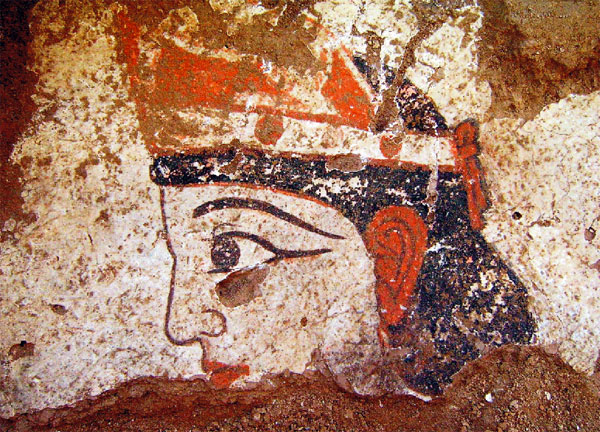 The 20th century has contributed quite a few brilliant finds and discoveries to the treasury of the global science on ancient history and culture. Sensational finds provide evidence of the ancient art and culture: murals, clay sculpture and texts were discovered when Toprak-kala in the south of Karakalpakstan was excavated during the first post-war years by the field team of the USSR’s Academy of Sciences, led by the prominent scholar Sergei Pavlovich Tolstov. This was followed by the discovery of early medieval murals of Pyanjikent, Afrasiab and Varakhsha. The unknown world of ancient and early medieval art of Central Asian nations was opening before the scientists.
The 20th century has contributed quite a few brilliant finds and discoveries to the treasury of the global science on ancient history and culture. Sensational finds provide evidence of the ancient art and culture: murals, clay sculpture and texts were discovered when Toprak-kala in the south of Karakalpakstan was excavated during the first post-war years by the field team of the USSR’s Academy of Sciences, led by the prominent scholar Sergei Pavlovich Tolstov. This was followed by the discovery of early medieval murals of Pyanjikent, Afrasiab and Varakhsha. The unknown world of ancient and early medieval art of Central Asian nations was opening before the scientists.
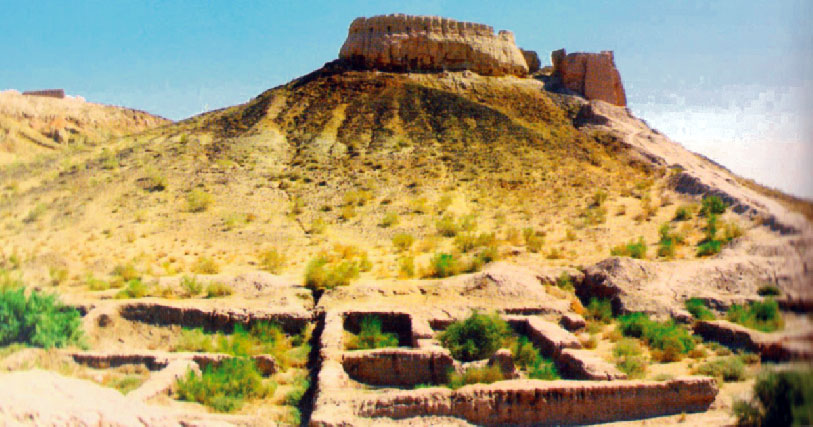 The most ancient art monuments discovered on the territory of Khorezm belong to Bronze Age (2nd millennium BC). However, the real heyday in the culture and art of this area coincides with the period of evolution and development of an independent ancient Khorezmian state on the verge of the 5th and 4th centuries BC, once Khorezm seceded from Akhmenid Empire. These developments were accompanied by rapid growth of the cities where numerous palaces and temples dedicated to ancient Khorezmian deities were constructed. Excavation materials from the outstanding archaeological monuments such as Toprak-kala, Koi-krylgan-kala and Kalalygyr-2 had demonstrated that the nation had had well-developed schools of architects and builders, painters and sculptors who created their own unique style and whose still surviving work keeps captivating the human mind.
The most ancient art monuments discovered on the territory of Khorezm belong to Bronze Age (2nd millennium BC). However, the real heyday in the culture and art of this area coincides with the period of evolution and development of an independent ancient Khorezmian state on the verge of the 5th and 4th centuries BC, once Khorezm seceded from Akhmenid Empire. These developments were accompanied by rapid growth of the cities where numerous palaces and temples dedicated to ancient Khorezmian deities were constructed. Excavation materials from the outstanding archaeological monuments such as Toprak-kala, Koi-krylgan-kala and Kalalygyr-2 had demonstrated that the nation had had well-developed schools of architects and builders, painters and sculptors who created their own unique style and whose still surviving work keeps captivating the human mind.
Research conducted by archaeologists, historians and art critics, as well as hard and painstaking effort of restorers whose able hands bring ancient art back from oblivion to make it the asset of contemporary culture gradually uncover the mysterious universe of ancient artistic images, traditions and schools.
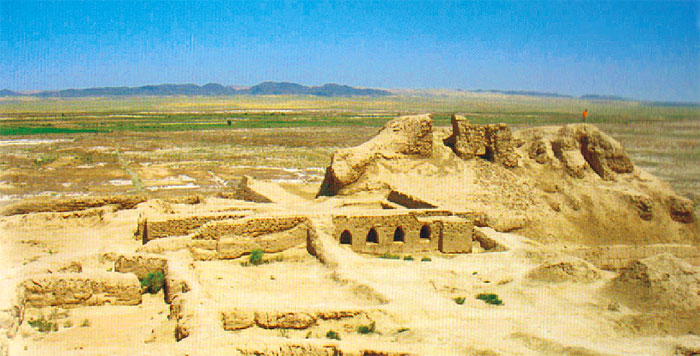 One of the most common types of monumental art in Central Asia was wall painting. Presently, the most ancient mural specimen from ancient Khorezm can be considered a mural fragment showing a beardless youth pulling a bowstring. It was discovered during the excavation of an observatory-temple in Koi-krylgan-kala and dated to the 4th-3rd centuries BC. A real museum of sculpture and wall painting of the second half of the 2nd and the 3rd centuries AD was discovered by scientists during the earlier mentioned excavations in Toprak-kala, the residence of Khorezmian shakhs. During subsequent years they discovered fragments of ornamental murals in Kaparas temple in Southern Khorezm and of subject painting in a temple complex Kalalygyr-2 in Sarykamysh delta of Amudarya, dating to the 4th-2nd centuries BC.
One of the most common types of monumental art in Central Asia was wall painting. Presently, the most ancient mural specimen from ancient Khorezm can be considered a mural fragment showing a beardless youth pulling a bowstring. It was discovered during the excavation of an observatory-temple in Koi-krylgan-kala and dated to the 4th-3rd centuries BC. A real museum of sculpture and wall painting of the second half of the 2nd and the 3rd centuries AD was discovered by scientists during the earlier mentioned excavations in Toprak-kala, the residence of Khorezmian shakhs. During subsequent years they discovered fragments of ornamental murals in Kaparas temple in Southern Khorezm and of subject painting in a temple complex Kalalygyr-2 in Sarykamysh delta of Amudarya, dating to the 4th-2nd centuries BC.
A real breakthrough in the studies of this most ancient period in the art history of Khorezm, and, perhaps, of the entire Central Asia, happened owing to the work of an international research group of scientists united in the framework of Karakalpak-Australian archaeological field team that carries out systematic studies of ancient Tashkyrman oasis situated in Beruni District of the Republic of Karakalpakstan.
The primary object of the filed work was an ancient settlement site discovered back in 1956 and known to the academics as Kazakly-yatkan. Local people use another, perhaps more ancient name for this monument – Akshahan-kala. Excavations commenced in 1995 and still continuing enabled scientist to establish that this was the largest in size settlement site of ancient Khorezm and to make an assumption that it was the capital of Khorezm after its secession from the Akhemenid Empire.
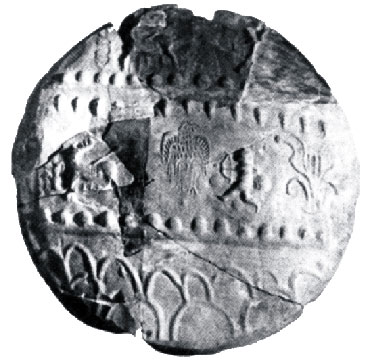 Since 2004 the main effort of the field team has been focused on studying a palace-and-temple compound in the so-called “sacred city” of Kazakly-yatkan. This is part of an ancient city surrounded by strong fortress walls; in the middle of it there was an unusual structure tentatively identified as mausoleum where the remains of the first kings of independent Khorezm could be buried. The north-western section of the “sacred city” was occupied by a group of buildings which, as the excavation results have shown, used to be the temple-palace compound. The temple portion of the compound was a structure square in plane, with semicircular towers at the corners and entrances at the centre of all four walls, again with towers at either side of the entrance. The temple had double walls with a corridor running between them.
Since 2004 the main effort of the field team has been focused on studying a palace-and-temple compound in the so-called “sacred city” of Kazakly-yatkan. This is part of an ancient city surrounded by strong fortress walls; in the middle of it there was an unusual structure tentatively identified as mausoleum where the remains of the first kings of independent Khorezm could be buried. The north-western section of the “sacred city” was occupied by a group of buildings which, as the excavation results have shown, used to be the temple-palace compound. The temple portion of the compound was a structure square in plane, with semicircular towers at the corners and entrances at the centre of all four walls, again with towers at either side of the entrance. The temple had double walls with a corridor running between them.
The first signs of ancient painting in the temple were discovered as early as in 2004-2005. Later on, when the field team was joined by restoration experts, it became possible to begin a large-scale clearing, conservation and scientific study of the discovered monuments of ancient art.
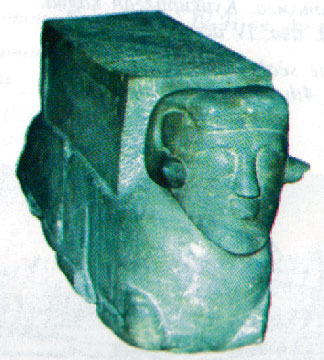 Traces of wall painting were found both inside the temple, and on the walls of a gallery that surrounded the temple along its outer perimeter, as well as on the walls of the palace portion of the compound. Inside the temple they discovered painted clay sculpture and luxurious architectural d?cor made of clay and alabaster and featuring multicolour painting over alabaster priming. In a number of instances it was established that some details of the architectural d?cor were covered in a fine layer of gold leaf. All these finds enable one to argue that the bowels of the Kazakly-yatkan ancient ruins contain unique artistic treasures, which have been barely studied. To extract these riches from underground, to study and to conserve them would probably require the effort of several generations of scientists – archaeologists, art critics and historians. The work of highly skilled restorers is also required to preserve the discovered treasures.
Traces of wall painting were found both inside the temple, and on the walls of a gallery that surrounded the temple along its outer perimeter, as well as on the walls of the palace portion of the compound. Inside the temple they discovered painted clay sculpture and luxurious architectural d?cor made of clay and alabaster and featuring multicolour painting over alabaster priming. In a number of instances it was established that some details of the architectural d?cor were covered in a fine layer of gold leaf. All these finds enable one to argue that the bowels of the Kazakly-yatkan ancient ruins contain unique artistic treasures, which have been barely studied. To extract these riches from underground, to study and to conserve them would probably require the effort of several generations of scientists – archaeologists, art critics and historians. The work of highly skilled restorers is also required to preserve the discovered treasures.
By now they have fully uncovered an about 60 meter long corridor in the western temple wall, where the murals had been found. The total length of the corridor is about 250 meters, which gives us hope for new discoveries. In the southern half of the corridor the painting survived on the wall and features the images of people on foot, a mounted procession and, probably, horse riders.
Yet of the greatest interest is painting discovered in the northern section of the western corridor, which was heaped over by clay plaster deliberately knocked off the walls.
 In total they discovered 45 painting fragments with preserved images of one or several characters. In the 36 instances the surviving painting features chest-low portraits. All these data are very tentative as the collection is still being processed in the restoration laboratory of the Institute of History, Archaeology and Ethnography of the Karakalpakstan branch of the Academy of Sciences of Uzbekistan. The analysis of all data related to the painting fragments from this section of the corridor enabled a conclusion that the entire plane of the inner wall in the northern half of the western corridor was divided by double solid lines into rectangular cells laid out in at least three tiers. Each cell contained an individual chest-low portrait. All portraits were performed following a single rule: torso to the front and head in half face and turned predominantly to the left. However, in few instances the head was pictured in half face turned to the right. This manner (the so-called “ancient oriental” one) of picturing a ruler was used in the coins of Parsee kings since the 1st century BC, the coins of Indo-Parthian rulers starting from the 1st century AD, as well as the coins of the Kushans, Sasanids and Euthalites.
In total they discovered 45 painting fragments with preserved images of one or several characters. In the 36 instances the surviving painting features chest-low portraits. All these data are very tentative as the collection is still being processed in the restoration laboratory of the Institute of History, Archaeology and Ethnography of the Karakalpakstan branch of the Academy of Sciences of Uzbekistan. The analysis of all data related to the painting fragments from this section of the corridor enabled a conclusion that the entire plane of the inner wall in the northern half of the western corridor was divided by double solid lines into rectangular cells laid out in at least three tiers. Each cell contained an individual chest-low portrait. All portraits were performed following a single rule: torso to the front and head in half face and turned predominantly to the left. However, in few instances the head was pictured in half face turned to the right. This manner (the so-called “ancient oriental” one) of picturing a ruler was used in the coins of Parsee kings since the 1st century BC, the coins of Indo-Parthian rulers starting from the 1st century AD, as well as the coins of the Kushans, Sasanids and Euthalites.
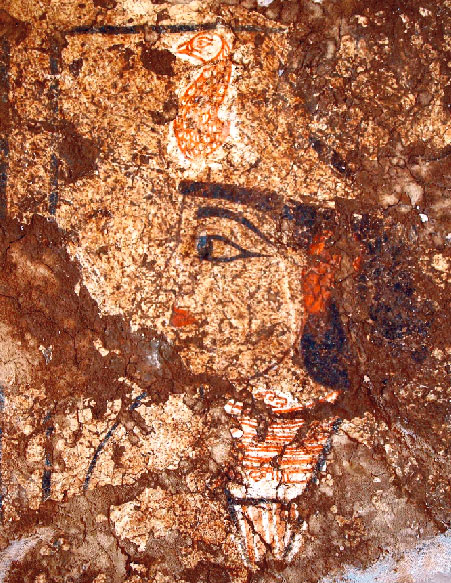 All characters in the gallery wear neither beard, nor moustache, but have rich black hair neatly combed to the back of the head covering the neck but clear of the ears, which are dyed in red colour – a completely unusual feature that has no analogy. The portrayal of beardless rules in the art of ancient Khorezm is not an exception. Similar portraits of beardless kings can be found on some Khorezmian coins, particularly on the earliest of them – the so-called coin “of the nameless ruler in kulakh”.
All characters in the gallery wear neither beard, nor moustache, but have rich black hair neatly combed to the back of the head covering the neck but clear of the ears, which are dyed in red colour – a completely unusual feature that has no analogy. The portrayal of beardless rules in the art of ancient Khorezm is not an exception. Similar portraits of beardless kings can be found on some Khorezmian coins, particularly on the earliest of them – the so-called coin “of the nameless ruler in kulakh”.
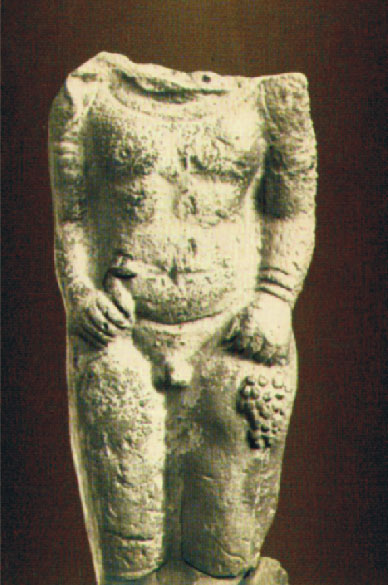 It is clear that the portraits show young people. There are no features that would enable the identifications of the characters’ gender; however, one possibility for such identification is offered by the fragment of an inscription in ancient Khorezmian language that was discovered together with the portraits. The inscription was deciphered by an oriental scholar V. A. Livshitz who believed that this was a kind of a “tag” under the portrait, bearing partly preserved name of the king, his father (“…gard the son of Yekhich”), and an ideogram “king”. All this enables one to think that at least some of the pictured characters are young men.
It is clear that the portraits show young people. There are no features that would enable the identifications of the characters’ gender; however, one possibility for such identification is offered by the fragment of an inscription in ancient Khorezmian language that was discovered together with the portraits. The inscription was deciphered by an oriental scholar V. A. Livshitz who believed that this was a kind of a “tag” under the portrait, bearing partly preserved name of the king, his father (“…gard the son of Yekhich”), and an ideogram “king”. All this enables one to think that at least some of the pictured characters are young men.
Some of the characters wear a crown, while the rest are pictured with bare head. All the portraits show a crown of one type yet in two variations. The simplest variation is a small round hat open at the top. At the front, significantly protruded forward and hanging over the forehead is a protomai of a bird with round head and thick beak. The almond-shaped eye of a bird and its feathering are painted very neatly and clearly. The other variation is more complex: a kind of a fabulous creature is painted on the lower part of the headdress. In some of the crowns this is a very realistic image, while in the others it is stylized to the extreme.
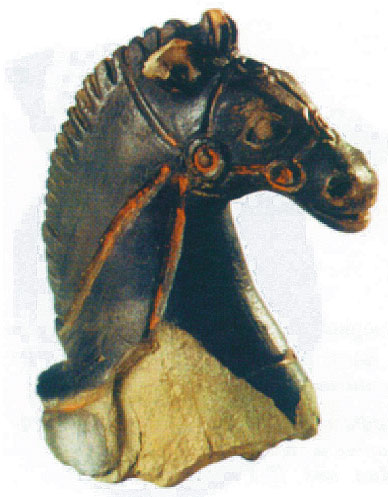 The characters in the gallery are usually portrayed wearing earrings. The neck of all the characters, both crowned and bareheaded, is wrapped in many coils of a string (grivna) with schematic images of animal heads at its ends. These grivnasare well known to scholars. Huge burial mounds of Scythian and Sak tribes of the Great Band of Eurasian steppes, among the rich array of things that accompany dead chieftains to another world, usually present also a gold grivna of many coils, with heads of a large predator – snow leopard or tiger – wrought in orb-like sculpture attached to its ends. There is no doubt that such grivna was a kind of symbol of power. Exactly the same grivna was wrapped around the neck of the characters pictured in the temple murals.
The characters in the gallery are usually portrayed wearing earrings. The neck of all the characters, both crowned and bareheaded, is wrapped in many coils of a string (grivna) with schematic images of animal heads at its ends. These grivnasare well known to scholars. Huge burial mounds of Scythian and Sak tribes of the Great Band of Eurasian steppes, among the rich array of things that accompany dead chieftains to another world, usually present also a gold grivna of many coils, with heads of a large predator – snow leopard or tiger – wrought in orb-like sculpture attached to its ends. There is no doubt that such grivna was a kind of symbol of power. Exactly the same grivna was wrapped around the neck of the characters pictured in the temple murals.
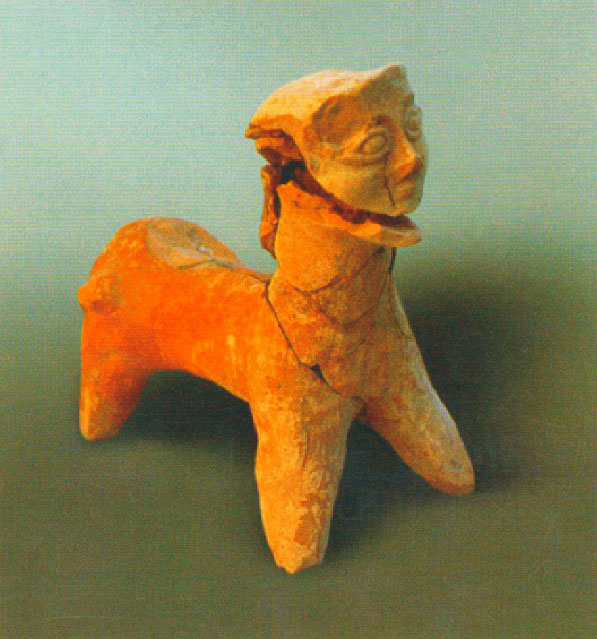 Thus it becomes apparent that what we see is a picture gallery of the royal dynasty and probably their family members. The painting is performed in a consistent manner following a certain rule of official royal portrait, and, despite the canonical uniformity of all the portraits, they still have some individuality. Ancient painters who created the gallery were ideologically programmed to present the image of a beardless royal youth in his prime and the young members of the regnant house loved by gods whose symbols the king wore in his crown. This canon of official royal portrait in the artistic tradition of ancient Khorezm was developed during the rule of an ancient dynasty and then repeated in different variations in royal portraits on Khorezmian coins and survived in this form until the time of the Arab conquest and the beginning of the islamization of people living to the south of the Aral Sea.
Thus it becomes apparent that what we see is a picture gallery of the royal dynasty and probably their family members. The painting is performed in a consistent manner following a certain rule of official royal portrait, and, despite the canonical uniformity of all the portraits, they still have some individuality. Ancient painters who created the gallery were ideologically programmed to present the image of a beardless royal youth in his prime and the young members of the regnant house loved by gods whose symbols the king wore in his crown. This canon of official royal portrait in the artistic tradition of ancient Khorezm was developed during the rule of an ancient dynasty and then repeated in different variations in royal portraits on Khorezmian coins and survived in this form until the time of the Arab conquest and the beginning of the islamization of people living to the south of the Aral Sea.
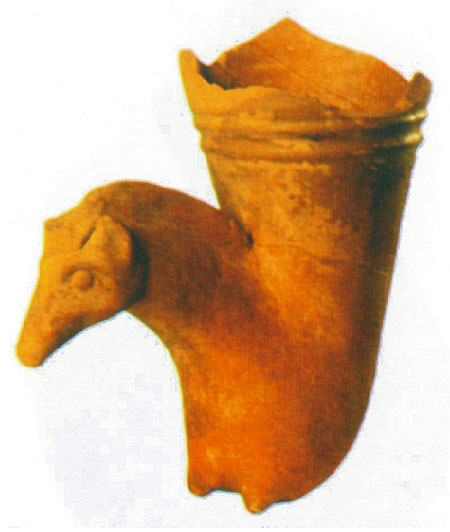 The Kazakly-yatkan murals are totally unique phenomenon in the art history. They have no analogy neither among presently known art monuments of the nearest Central Asian and Middle Eastern countries, nor in remoter countries in Middle East and Hindustan subcontinent. Certain painting elements enable one to speak about its connection to Scythian and Sak livestock breeding tribes of Eurasia, and to the art of the so-called “animal style”. Grivna wrought in that style and worn over the neck of the characters is a rather telling sign. At the same time, other features in the portraits, specifically the pose of the royal characters, which is performed in an oriental style, takes us to the universe of ancient images of Central Asia and Middle East. This duality determines the specificity of the portrait painting in Kazakly-yatkan, an ancient land lying on the border of two wide worlds of the antiquity: the ancient eastern civilizations and nomadic tribes of the Great Band of Eurasian steppes and deserts.
The Kazakly-yatkan murals are totally unique phenomenon in the art history. They have no analogy neither among presently known art monuments of the nearest Central Asian and Middle Eastern countries, nor in remoter countries in Middle East and Hindustan subcontinent. Certain painting elements enable one to speak about its connection to Scythian and Sak livestock breeding tribes of Eurasia, and to the art of the so-called “animal style”. Grivna wrought in that style and worn over the neck of the characters is a rather telling sign. At the same time, other features in the portraits, specifically the pose of the royal characters, which is performed in an oriental style, takes us to the universe of ancient images of Central Asia and Middle East. This duality determines the specificity of the portrait painting in Kazakly-yatkan, an ancient land lying on the border of two wide worlds of the antiquity: the ancient eastern civilizations and nomadic tribes of the Great Band of Eurasian steppes and deserts.
Vadim Yagodin